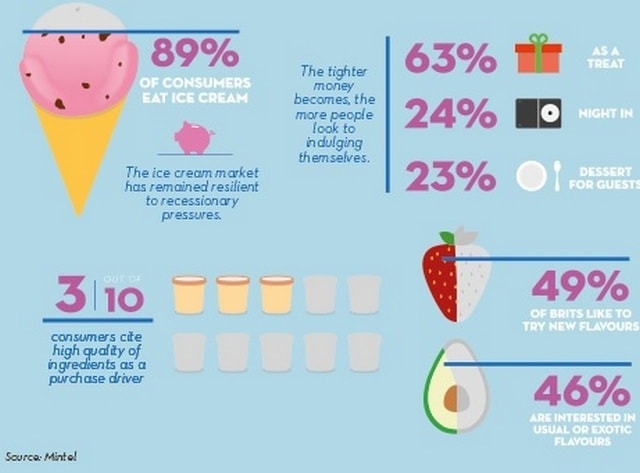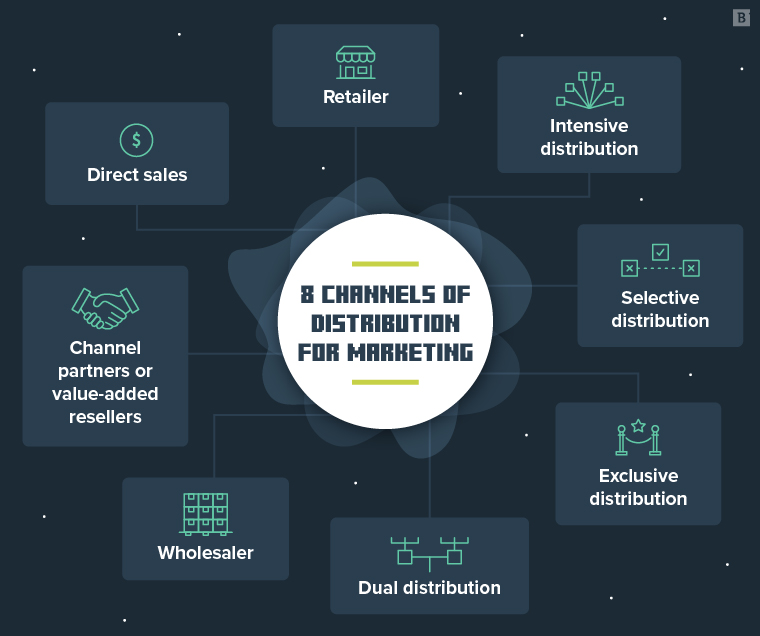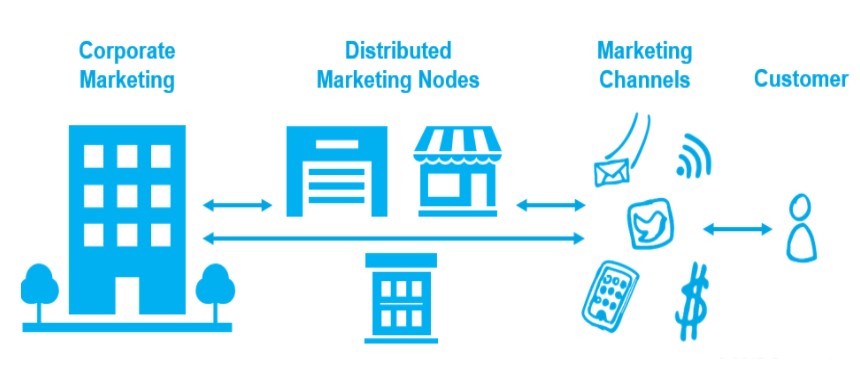Understanding Distributed Marketing: How It Works and How to Benefit Your Brand
75% consumers expect companies to provide experience across different channels.
Imagine baking cookies decorated in different shapes without a cookie cutter. Thanks to cookie cutters, bakers no longer toil for hours to make complex cookies of different shapes. When it comes to marketing, think of distributed marketing as a similar tool that enables brands to deliver consistent experiences across corporate marketing and partner networks.
What is Distributed Marketing?
Distributed marketing scales the gap between corporate, employees, channel collaborators, local retailers, and agents while your brand delivers consistent experiences across corporate marketing and partner networks. Marketers develop and share on-brand, collaborative content across Cloud Distribution Channels
Distributed Marketing consists of a managed package that you install in your CRM landscape. You can also install a distributed marketing cloud environment to enable compelling content collaboration easily. Today, most marketers use the power of marketing Cloud to help teams of all sizes engage with their business reliably and at different scales.
As a marketer using distributed marketing, you will:
- Empower your teams to engage with their business book at scale with on-brand content.
- Create moments of collaboration and send different messages over time without worrying about managing the touchpoint.
- Harness brand and legal compliance with automatic and manual approval processes.
- Send messages to clients at once, use easy segmentation tools like list views.
How is Distributive Marketing Different from Centralized Marketing?
Sharing responsibilities creates alliances between corporate and local retailers and distributors. With corporate resources and know-how with your teammate’s invaluable local market knowledge which centralized marketing cannot.
In centralized marketing, a single individual or team handles all marketing activities while giving a unified brand image to your business.
Distributed marketing is different altogether. Here, multiple teams and individuals handle different marketing functions- from creating templates, framing advertisements, and sending emails, which involves co-branding and customization. Distributed marketing allows corporations to maintain control over their brand to support local customization at the local level with consistency. How? Let’s understand with the example of Baskin Robbins.
Baskin Robbins has specialty ice cream stores that you can locate in over 50 countries worldwide. Dunkin Donuts, its parent company, controls all its costs easily. In addition, they control the brand’s unique value proportion of 31 flavors, where customers enjoy a different flavor every day of the month. However, Baskin Robbins franchises support their local communities by sponsoring youth sporting events or educational programs.

With distributed marketing, Baskin Robbins can reach and connect with their consumers in a more localized manner without compromising with their brand message.
Amazon is hardly alone in its charge into private labels. Big-box retailers like Walmart and Target have been offering store brands for years and racing to start more local labels to target consumers better.

However, with its expansion to democratize retail in 1994, Amazon has shifted from being an impartial, may-the-best-product win distributor to connecting with millions of potential customers with more local labels.
Another successful example of distributed marketing was Bobcat. In 2019, Bobcat company prepared to launch new messaging and introduce a major change in their product series in ten years. With a centralized marketing campaign, the marketing team struggled to connect with the audience at a local level. They needed a strategy to help dealers activate the brand at the local level to drive more sales and gain adoption among people. The solution?

With distributive marketing, Bobcat launched BrandMuscle, enabling the company to co-fund management systems, templates for marketing materials that local equipment dealers could personalize, up-to-date location data across the web, and more. Within six months of its processes so every tactic could be executed and measured within a one-easy-to-use new campaign was flourishing by serving the evolving needs of customers and local agents.
How Can You Benefit From Distributive Marketing?
Opting distributed marketing techniques can help you grow your business while ensuring your customer experience is consistent and on-brand. Here’s why you should invest in distributive marketing if you haven’t:
Better Brand Alignment
The most visible impact of a healthy brand-to-local balance is organizational nature. When you connect better with local marketers, inappropriate brand executions on a regional level begin to decline. In addition, when issues arise, your distributed marketing system will likely make resolutions faster and less expensive.
Reduced Stresses on Creative Resources
When you do distributed marketing right, you’ll discover that your in-house creative resources are liberated from the slew of one-off requests that can consume your entire week. As you get more time to brainstorm ideas and execute those ideas, your creative teams will likely deliver more output to amplify your brand awareness.
Higher Brand Consistency
While distributed marketing may take some time for the effect to become noticeable, it will appear the next time you connect with a local franchise or agent.
Think of this as setting a brand authority program for your business focal over the optimum local use of brand-supplied assets. Then, when local agents stay on brand, share their work with their peers to reinforce and spread the behavior.
Greater Marketing Agility
As your distributed marketing system comes into full effect, you will find subtle changes begin to take place in your planning and thinking. How?
Say you aim for shorter turnaround times in your current marketing campaigns. You may call your creative executives to create an increased number of campaigns for targeted markets.
When you push your comfort zones, you better understand how much you can accomplish with your current resources and leadership and become responsive and nimble accordingly.
What are the Challenges with Distributive Marketing and the Keys to Solving Them?
A brand’s voice is its lifeblood. Distributive marketing is the most effective means and cohesive strategy to ensure your brand voice stays consistent from brand to local agents to distributors till it reaches the consumer. However, there is no shortage of uphill battles and hurdles.
Here are a couple of major challenges with distributed marketing and actionable solutions for turning it into an opportunity.
Consistency
Today, many distributed organizations struggle to strike a balance between their corporate voice and the local jargon of the target market. The larger the corporation, the more difficult it can be to maintain a consistent message that resonates with corporate ideals.
For marketers, it’s a struggle to connect with the right audience by creating a strategy that reflects your brand and syncs within the local community.
Solution: Maintaining a consistent brand voice starts when you streamline your marketing strategies. Utilizing one central distributed marketing platform for your entire organization removes the guesswork of brand messaging and gets all partners on the same page of corporate expectations and guidelines. It also fosters easy communication between the corporate, stakeholders, and local agents with seamless submission, approval, and editing without the need for endless email chains.
Campaign Effectiveness
All marketing campaigns must be data-driven. After all, how else can you see what works and what doesn’t? However, with the infinite data coming in through distributive marketing, you may have difficulty extracting important information and, therefore, trouble analyzing just how effective your efforts are.
Solution: Marketing teams will help brands use data from distributed campaigns to find out ROI, consumer behavior, and market trends. Collaborate with marketing analysts offering data delivery and developmental support to avoid wasting time on ineffective campaigns.
Integration of Distributed Marketing Software
Traditional marketers know what’s worked for them and are often reluctant to learn different systems. Apart from the learning curve of software or integrating it with their current strategy, marketers are sometimes unwilling to invest in software that hasn’t proved its value to them.
Solution: Don’t knock it until you try it. Distributive solutions like the Personal Marketing Center greatly simplify the marketing process for those within a distributed landscape. In addition, Salesforce and Podio connect your distributed teams, and workflow tools like Zapier can connect multiple third-party apps, so you don’t have to reinvent the wheel.
Automating your distributed campaigns reduces manual work and massive time and ensures you capitalize exactly where it counts. In addition, it’s often easy to learn and usually comes with comprehensive customer support that can guide users until they adapt to its functionality.
Quick Response to Changes
If the data projects something isn’t working, you change it. If something goes well, you capitalize on it. However, this can be a challenge to distributed organizations, where if something works well in one locality may fizzle out in some other.
Solution: Local agents use online or print on demand when you automate decision-making with certified and personalized templates. Softwares like PLF streamline work for managers to control the message and content while giving local authority the power to use what makes the most sense for them and their customers.
Automation paves the way for creative execution and a proof-and approval process, ensuring the marketing content works towards greater brand objectives.
Increase Content-Driven Marketing
Content marketing is a pivotal part of most distributed marketing strategies; however, according to Sirius Decisions, an amazing 60-70% of content created by B2B marketers is never used. In addition to being a waste of time and resources, the numbers reflect a common problem of distributed marketing: ensuring to make efficient content for field marketers and local sales people so that content for field marketers and salespeople so that content is deployed.
Solution: Keep custom content in one location. This makes selection and utilization easier for those in local offices. The main challenge is not producing quality content but circulating it among distributed branches. Automated distributed marketing software allows distributed marketing leaders to:
- Execute effective campaigns cutting costs.
- Simplifying an otherwise tricky situation.
- Easier for brands to get the most of the marketing materials they produce.
Now What?
With distributed marketing, you can easily scale marketing for organizations that need customization, brand-compliant local advertising for greater channel partner networks.
When you gain a deeper understanding of your brand’s challenges, you streamline creating strategies that help you identify solutions to improve the efficiency and effectiveness of your local marketing campaigns.
